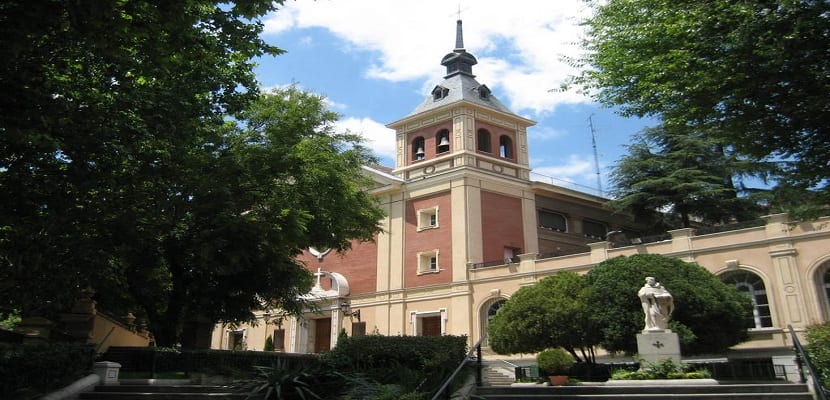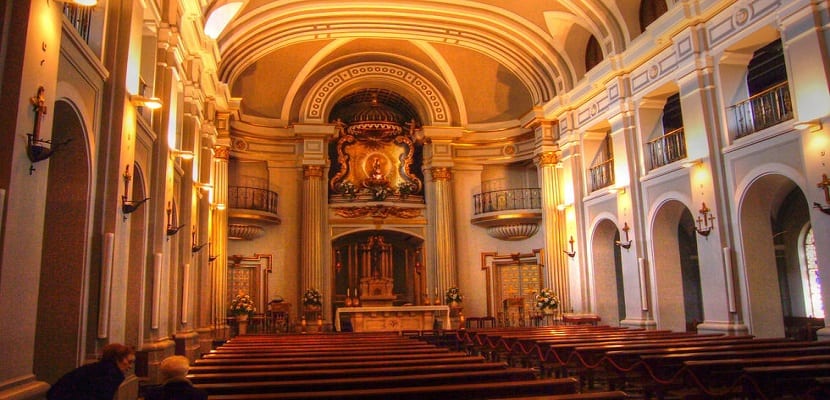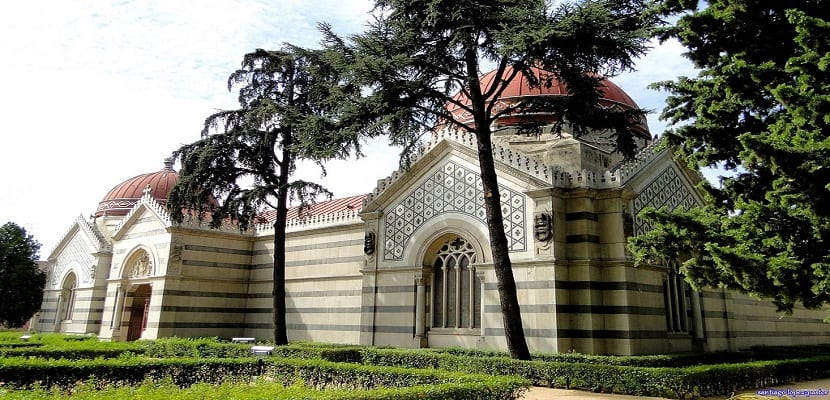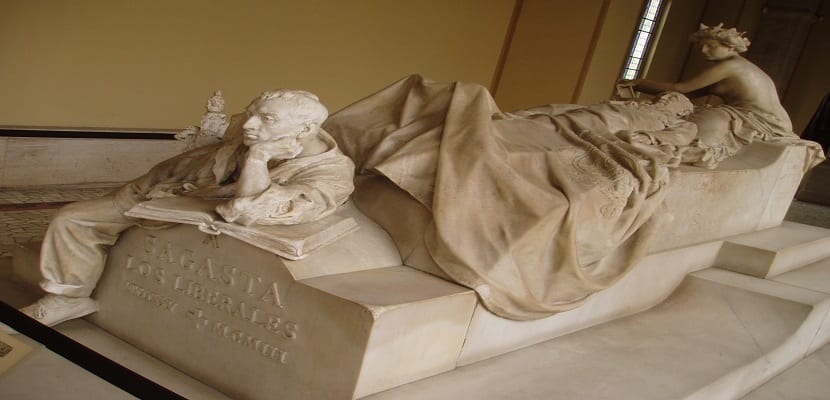
Basilica of Virgen de Atocha | Image via Skyscrapercity
Near the Plaza de Carlos V in Madrid, popularly known as Atocha, is the Basilica of Our Lady of Atocha. Its history has its origin in the devotion to a small image of the Virgin brought from Antioch according to legend. Next to it is the Pantheon of Illustrious Men where politicians and personalities of the XNUMXth century are buried.
These are two of the most interesting places to visit in the Spanish capital, but they go unnoticed by most tourists who visit Madrid. That is why today we take a tour through the history of the basilica and the pantheon, two monuments closely linked to the country's elites. Can you come with us?
Basilica of Our Lady of Atocha
Around the XNUMXth century, a primitive hermitage was built, which with the passage of time deteriorated until in the XNUMXth century a large church and a Dominican convent were created. Its promoter was Fray Juan Hurtado de Mendoza, confessor of Emperor Carlos V. Since then, the Spanish royal family felt a predilection for the Virgin of Atocha, even becoming a talisman for the war victories of Felipe II. He always came to her for divine help and to give thanks for her favors.
Felipe IV proclaimed her in 1643 protector of the Spanish monarchy and royalty. Thus, at the beginning of the XNUMXth century, the Queen Regent María Cristina de Habsburgo-Lorena began the tradition of presenting the new princes who were born to the Virgin of Atocha.

Interior of the Basilica of Atocha
After the looting of the Napoleonic troops at the beginning of the XNUMXth century, the complex was restored and after the confiscation the Dominican convent was transformed into a barracks for the disabled. Due to the dilapidated state that it reached around 1890, the Queen Regent María Cristina commissioned the project of a new Basilica of the Virgin of Atocha in Eastern Roman style and the construction of a Pantheon of Illustrious Men was ordered.
The Civil War would make a dent in the church as it was set on fire, losing all the works of art except the image of the Virgin of Atocha that had previously been hidden in a private home. It would not be until a decade later when restoration work began, taking advantage of part of the pre-existing walls but eliminating any vestige of Byzantine decoration.
Around the 60s of the XNUMXth century, the Virgen de Atocha school was built presiding over the free-standing campanile tower and the playgrounds.
The Basilica of the Virgin of Atocha is located on Avenida Ciudad de Barcelona nº 1 in Madrid.
What is the Basilica of the Virgin of Atocha like?
This basilica has a single nave, side chapels and galleries between buttresses, a lowered vault with lunettes and a semicircular chapel at the head. The façade at the foot, of a classicist style, is topped with a triangular pediment and flanked by two towers with a slate spire in the "Austrian style". The conventual area, with an "L" plan, is attached to the head, forming a cloister with a square plan.
Pantheon of Illustrious Men

Image | Flickr by S. López Pastor
The Pantheon of Illustrious Men responds to two of the constants of the end of the century: historicist architecture and funerary sculpture. The reason that explains why a funeral precinct for our "illustrious men" goes back to 1837, when the Cortes Generales voted on a project to convert the church of San Francisco el Grande into a National Pantheon of Illustrious Men. These should be elected by the Courts fifty years after their death. Many names were proposed, discarding those whose mortal remains could not be recovered (Cervantes, Velázquez, Tirso de Molina, etc.)
Finally this first pantheon was inaugurated in 1869, hosting the remains of the poets Juan de Mena, Garcilaso de la Vega and Alonso de Ercilla; the soldiers Gonzalo Fernández de Córdoba (the Great Captain) and Federico Gravina; the Chief Justice of Aragon Juan de Lanuza; the writers Francisco de Quevedo and Pedro Calderón de la Barca and the architects Ventura Rodríguez and Juan de Villanueva. However, years later they were returned to their places of origin, which closed for a time the idea of creating a national pantheon.

The regent queen María Cristina, widow of King Alfonso XII, took up the idea in 1890 and decided to allocate part of the area of the future Basilica of the Virgin of Atocha for this purpose. The choice of this place was due to the fact that personalities such as José de Palafox, Francisco Castaños, Manuel Gutiérrez de la Concha or Juan Prim were buried in it, since they were directors of the Invalides barracks that were enabled in part of this enclosure after the departure of Spain of the Napoleonic troops.
After the Pantheon of Illustrious Men was completed, in 1901 the remains of those previously mentioned were transferred to it but, as would happen with those of the politicians buried there in later years, many were again transferred to other places, claimed by their cities of source.
Currently thirteen illustrious figures from Spanish political and military history rest here in tombs made by renowned sculptors such as Agustín Querol or Mariano Benilliure. Among the characters that we can find are: Ríos Rosas, Cánovas del Castillo, José de Canalejas, Palafox, Castaños, Prim and Concha, among others.
The Pantheon of Illustrious Men is located at 3 Julián Gayarre street in Madrid. It opens from Tuesday to Saturday from 10am. to 14. and from 16h. at 18pm. and on Sundays and holidays from 10am. at 15pm.